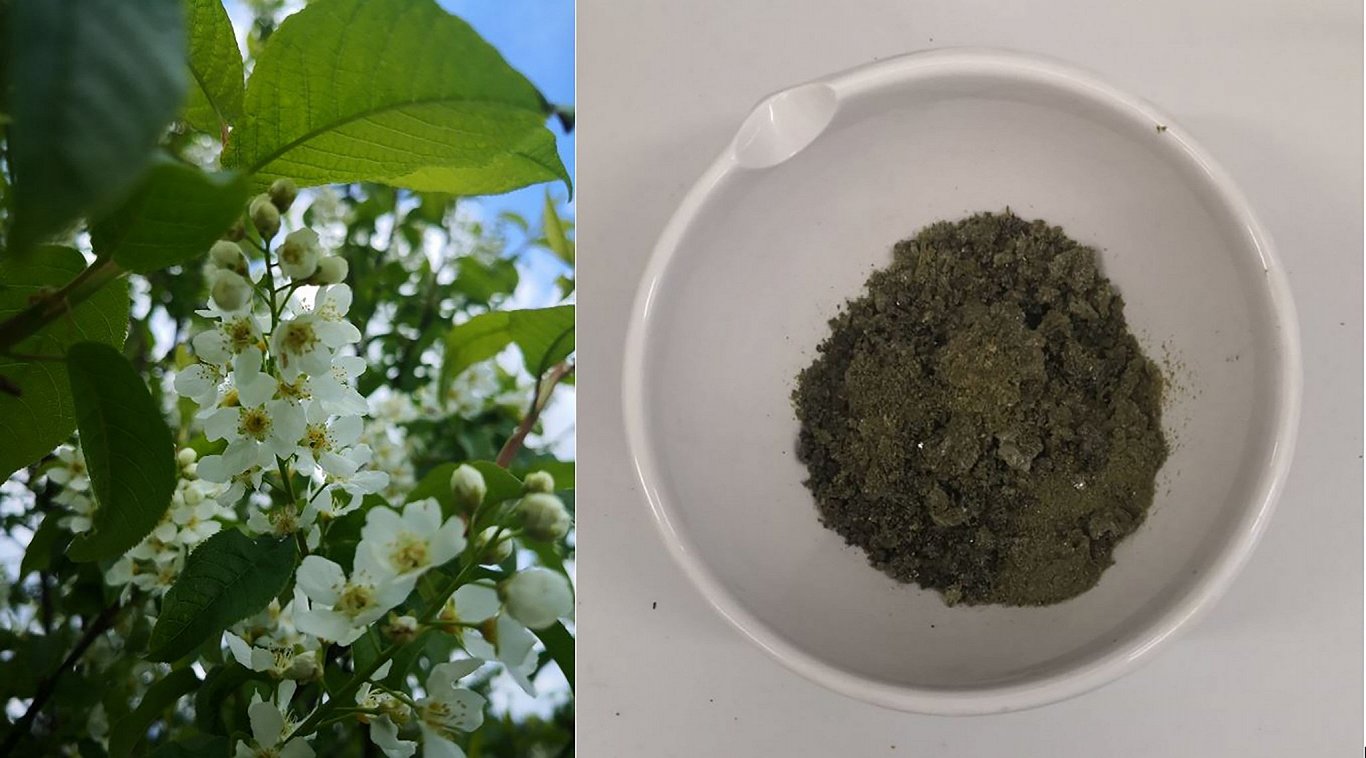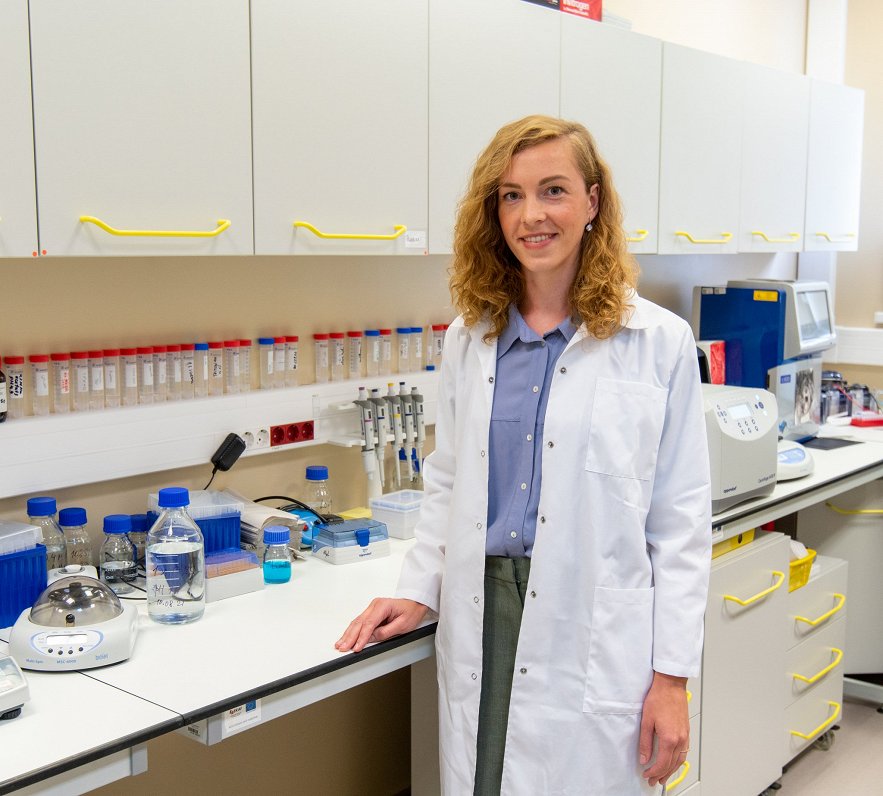For her PhD thesis, Inga Sīle, who is a researcher at the Latvian Institute of Organic Synthesis and a lecturer at Riga Stradiņš University, examined 40,000 popular beliefs of the Latvian people and selected around 2,000 of them, where plants and the use thereof in treating humans are mentioned. Practical experiments were also carried out to see if folklore holds up to scientific scrutiny.
How did you come up with the idea of researching Latvian beliefs about medicinal herbs for your doctoral thesis?
Plants have been close to me since childhood, and when the time to select the topic of my doctoral dissertation came, I happened to meet professor Maija Dambrova, who had already thought about studying Latvian popular beliefs from a pharmaceutical perspective, but not practically committed to the idea at that point. Unlike Estonia and Lithuania, studies of folklore have not been carried out from a pharmacological perspective in Latvia to date. This idea appealed to me a lot and I started studying Latvian popular beliefs.
What was the biggest challenge in doing this research?
It was often the case that when reading about a popular belief, I understood that it was about a herbal remedy, but I could not always immediately associate it with a specific plant. For example, yarrow has approximately 25 synonyms that occur in Latvian popular beliefs. I read around 40,000 Latvian popular beliefs, selecting less than 2,000 that mentioned the use of herbal remedies for treating people and improving health. It must be said that the number of herbs mentioned in Latvian popular beliefs is significant - 211. My first year was spent writing out the plants from popular beliefs and summarising information on what parts of these plants are used and how they are prepared. After that, I also conducted practical experiments with plants.
What were your main conclusions in this doctoral thesis?
Interestingly, the most frequently mentioned plant in Latvian folk beliefs was not chamomile, as I previously thought, but yarrow, which was mentioned 90 times. Chamomile and onion followed, which was a big surprise to me, but it turns out that in the past, Latvians used onion in both fried and boiled form, for example, on furuncles and for the treatment of various skin conditions.

One of the “superpower” plants of Latvia, which was also emphasised in popular beliefs, is wormwood, which is undeservedly forgotten nowadays, because the plant has many valuable properties. Another surprise about the most popular plants mentioned in the popular beliefs was that of bird cherry, which was mentioned 40 times. Nowadays, we usually only notice bird cherry in spring, when the tree blooms with beautiful, fragrant flowers, but few people still know that this tree has multiple medicinal properties that help with digestive disorders, as well as skin problems. Bird cherry was also one of the plants that I chose for experimental research.
What diseases did people mostly suffer from in Latvia in the past?
Digestive disorders were mentioned most frequently, followed by respiratory system disorders and skin problems. Of course, it should be taken into account that folk medicine mostly dealt with the treatment of symptoms rather than the identification of the disease. Therefore, it is not surprising that the most common diseases of the current day, such as cardiovascular diseases, cancer and diabetes, are rarely mentioned in folk beliefs. Cancer was only mentioned in one popular belief and cranberries were offered as a treatment; however, no in-depth conclusions can really be drawn on the basis of one belief.
If we talk about the most popular herbs of the past, which were used in Latvia for almost all diseases, chamomile and birch can be mentioned. I also compared the herbal remedies mentioned in the popular beliefs with plant monographs of the European Medicines Agency, which record the research-based use of plants. The conclusion was that only 1/3 of the medicinal properties of plants mentioned in Latvian beliefs have been confirmed by modern research. However, this may also be due to the fact that certain properties of plants have not yet been sufficiently studied.
Can you tell us about your hands-on plant research?
One of the plants that I subjected to practical in depth studies was the above-mentioned bird cherry. The Latvian cosmetics company Silmachy, which produces soaps, creams and shampoos, used the insights gained from my research on bird cherry flower extract and created new cosmetic products, because bird cherry flower extract has both anti-inflammatory and immunity enhancing properties, and even an anti-ageing effect.
Another plant studied by me was pelargonium, especially its root extract. We concluded that it has a good anti-inflammatory effect, which is especially valuable when used for the treatment of gingival periodontitis. It was a discovery, because previously pelargonium was associated with a flower whose leaves help with earache - my grandmother also used it for these purposes.
What other future potential do you see for your research?
This study is one of the steps towards upgrading the knowledge that is hundreds of years old to suit modern standards. Times are changing, as are the possibilities of obtaining plant extracts, and new medicinal forms are being developed. For instance, herbal extracts are also placed in nanoparticles nowadays, which then enter the human body in a very targeted manner exactly where needed. Knowledge of how diverse the use of plants in ancient times was, enables extended research nowadays, leading to the discovery of new ways to use plants. For example, we researched the chemical and biological composition of 9 wild spring plants and how it changes when these plants are cultivated for the Institute for Environmental Solutions.
The results were interesting. We concluded, for instance, that one of the plants, when it was cultivated, contained significantly more alkaloids than when it was growing in the wild. This can be both good and bad, depending on the achieved result, but cultivated plants will always have different chemical and biological parameters to plants growing in the wild; furthermore, such parameters of the plant will also differ depending on whether it has been grown as little as a few hundred kilometres to the north or south, east or west. Today, people collect herbs for medicinal purposes less often, however, this tradition is still alive in the Baltic states and it is valuable know-how that is worth studying from the point of view of modern pharmacology.
This story was originally published in Baltic Business Quarterly, which is published by the German-Baltic Chamber of Commerce in Estonia, Latvia and Lithuania. You can read more here: https://www.ahk-balt.org/lv/publikacijas/zurnals.





























